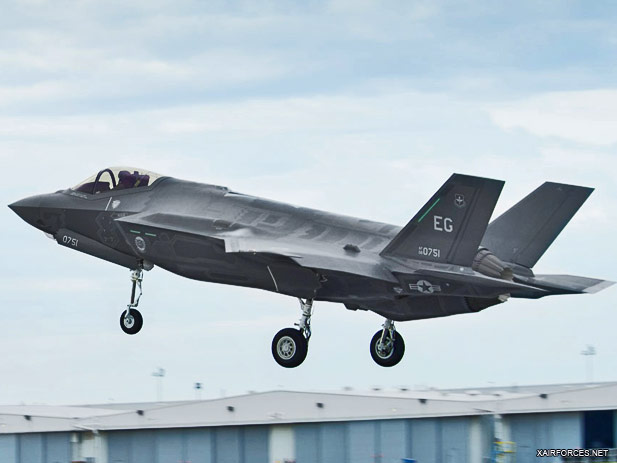
Pentagon to Delay 120 F-35s

The Pentagon is gearing up to restructure Lockheed Martin’s F-35 Joint Strike Fighter program for a third time in three years, sources said, with production of more than 120 more planes to be postponed to save money and allow more time for development.
The latest changes should save the Pentagon about $15 billion from fiscal 2013 through 2017 and will be part of the fiscal 2013 budget plan to be sent to Congress in February, according to three sources familiar with planning for the Pentagon’s largest weapons program.
President Barack Obama will join Defense Secretary Leon Panetta at the Pentagon on Thursday to discuss overall defense budget cuts and a revamped military strategy.
F-35 Program Faces a Challenging Year
The Lockheed Martin F-35 Joint Strike Fighter program faces fresh challenges as the new year begins.
First, a long-awaited “should cost” review from the U.S. Defense Acquisition Board might clarify whether Lockheed Martin’s continued optimism on the average procurement unit costs (APUC) is justified.
In addition, big cuts to the U.S. defense budget seem unlikely to spare the F-35, which is the Pentagon’s highest profile acquisition, and might undermine the basis for the APUC calculations.
Meanwhile, the ongoing debate over concurrency was further fueled by the leak last month of a Quick Look Review (QLR) of the program’s flight-test progress by Pentagon officials.
Although the QLR did not identify any fundamental design risks, it listed 13 causes for concern. Only two of these had been previously publicized–the problems with the Integrated Power Package and the Helmet-Mounted Display.
The QLR newly identified three more major problems: a fire risk with the fuel-dump subsystem, the tailhook of the F-35C and a “classified survivability issue” (presumably stealth-related). It also listed transonic buffet, maneuvering performance, fatigue life and test execution issues that might turn into major problems as development continues.
The report noted that “weight margins are extremely tight” and cited a large volume of change requests and “low design maturity.” It called for “serious reconsideration of procurement and production planning.”
Negotiations for the fifth low-rate initial production contract for 30 more jets continue. Lockheed Martin has agreed for the first time to share the costs of subsequently reworking them with changes mandated during development.
The program office has cut two aircraft from LRIP 5 to help pay for such concurrency costs, as well as 11 to 15 percent cost overruns on LRIPs 1 through 3. A similar number of aircraft are due to be built in LRIP 6. On January 5, Reuters reported that total U.S. procurement of F-35s from 2013 to 2017 (LRIPs 7 through 11) would be cut from 423 to about 300.
In another report last fall, the Pentagon’s director of operational test and evaluation (DOT&E) said he could not approve the start of initial pilot training in the six Lot 2 F-35As already delivered to Eglin AFB until more flight test hours had been accumulated on fully instrumented development and Lot 1 aircraft at Edwards AFB. The F-35 program office and the Air Force aeronautical systems commander disputed the DOT&E’s risk assessment, but the aircraft nonetheless have not yet started flying.
Meanwhile, Lockheed Martin reported that it passed the planned total for 2011 of 872 F-35 flight tests by mid-November. The company suggested that this year’s target of about 1,100 test flights could well be exceeded.
Source: 06 January 2012 - Daily Air Force News (www.dailyairforce.com) & by Chris Pocock (www.ainonline.com)
Photo: Lockheed Martin delivered the sixth Lockheed Martin’s F-35A Joint Strike Fighter allocated to flight training at The U.S. Air Force Eglin AFB on October 26 last year. (Photo by Lockheed Martin)
(6.01.2012)
|